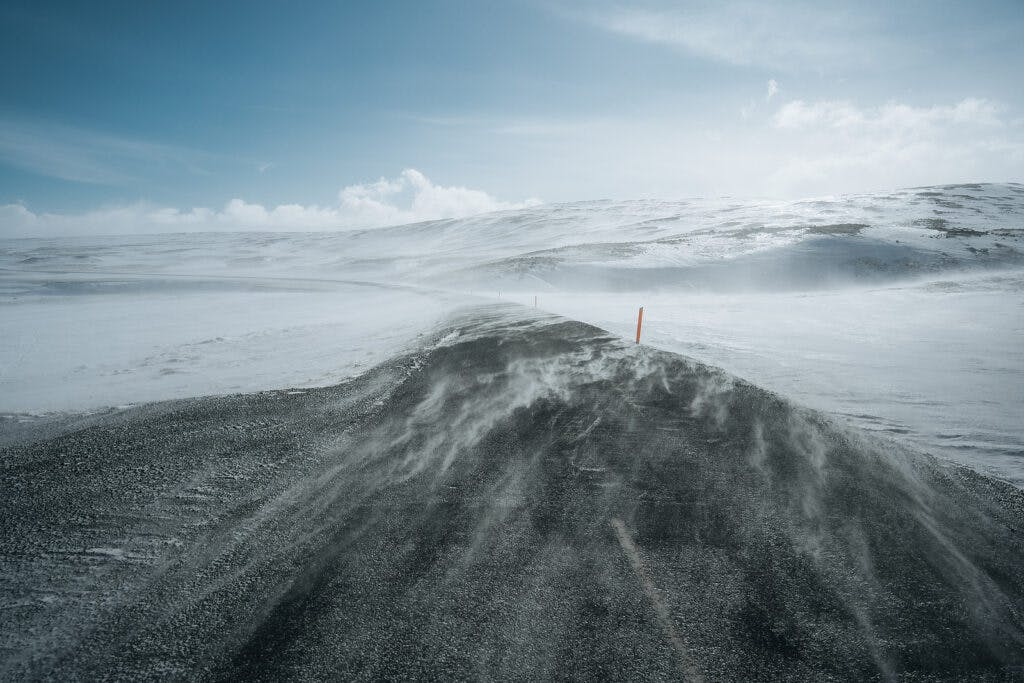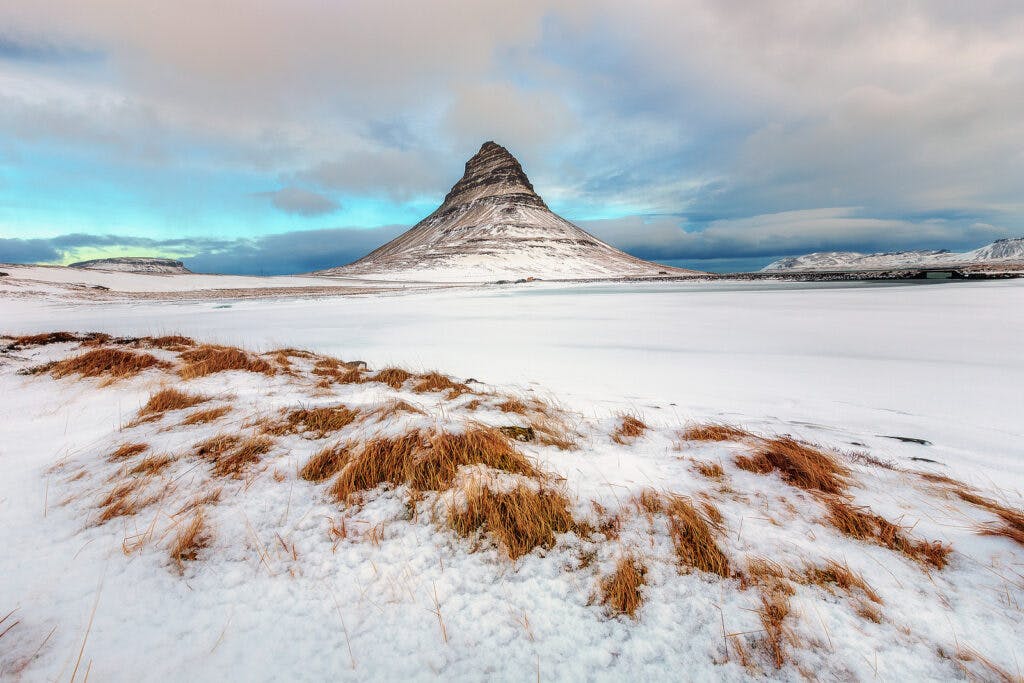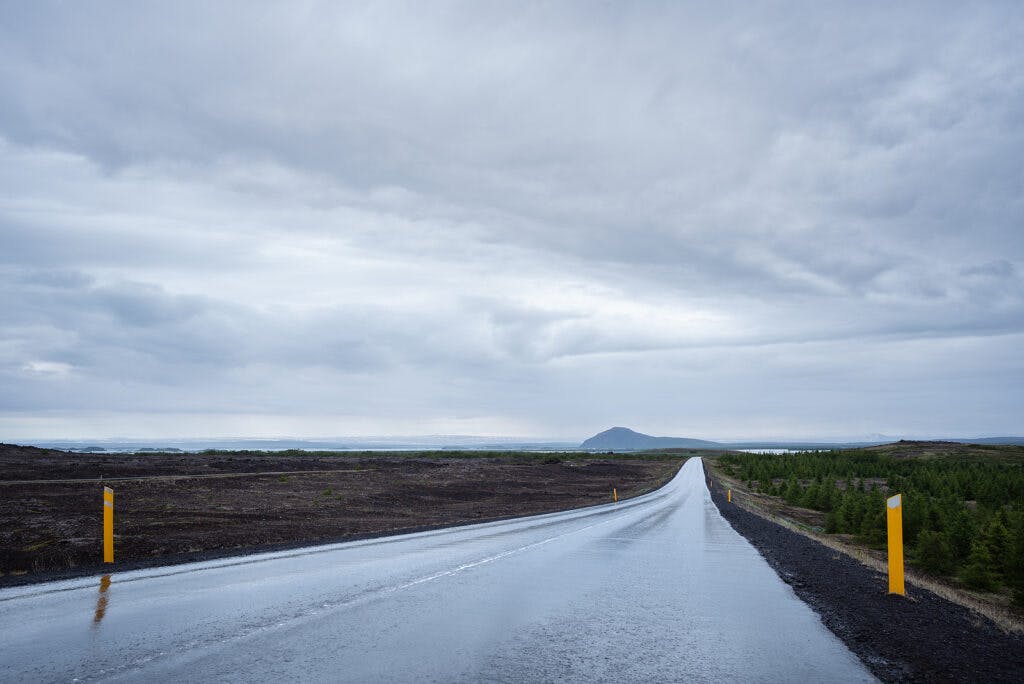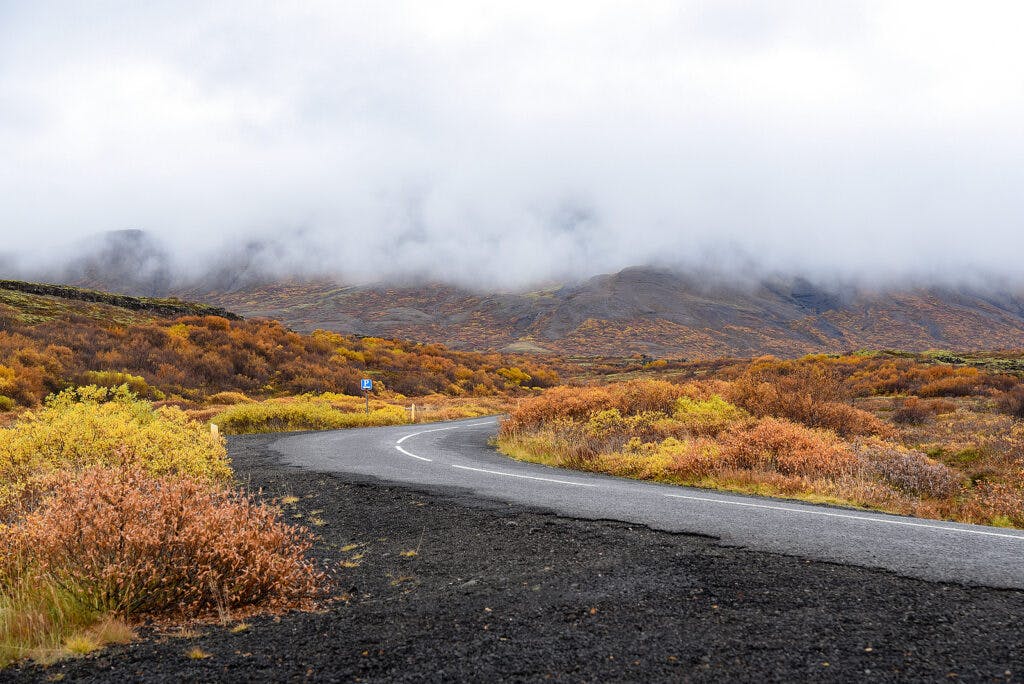Loading...
October 29, 2025
Weather in Iceland
Most of you have probably heard the saying “If you don’t like the weather in Iceland, wait 15 minutes!” Although it may sound like a joke, there is some truth to it. From September to about April, this is certainly the case and the weather in Iceland can be described as many things, including fickle. Driving around Iceland during “high season” or bad weather means one has to be vigilant when it comes to weather updates and road conditions in the area you plan to drive.
What are the Weather Conditions in Iceland?
Just about any type of weather that can occur in the world can occur in Iceland. With the exception of tornadoes (only 13 of which have ever been recorded in Iceland’s history), and hurricanes (which don’t tend to reach Iceland’s shores because of the cool climate), you need to be prepared for all types of weather on this Nordic island. What types of weather can a visitor expect on a typical trip to Iceland? Let’s explore.Looking to explore Iceland? Book your rental car today.

Wind
When it comes to weather in Iceland, the locals are no strangers to high winds. Wind in Iceland can sometimes be intimidating due to its pure, brutal force. Wind gusts can be magnified in places like mountain slopes, valleys, and open areas and the wind factor definitely needs to be taken into consideration while driving in Iceland. For example, when coming up to a mountain slope or a sudden opening in the landscape, winds may change. Proceed at a slower speed than usual and exercise caution.
High winds can occur at almost any time of the year in Iceland, however, they are most common in the winter. January tends to be Iceland’s peak month for high winds.
When parking, try to park the car into the wind so the wind won’t force your door and rip it out of your hands, causing potential injury and even damage to the car. If that’s not possible, open one door at a time, starting with the one facing the least wind force, and help others in and out of the car with their door.
Read more: Rental car damage assessment

Snow
Many people imagine all of Iceland to be regularly covered in snow, but this isn’t really the case. Sure, we get our fair share, but it’s not always to pinpoint when and where snow can be expected in Iceland. If you really want to experience snow in Iceland, you’ll want to visit at the right time of year, and always make sure to include areas of Northern Iceland on your itinerary, as it’s more likely to snow there.
Saamis (the indigenous people of northern Scandinavia) and the Inuits in Greenland have a wide variety of words for snow, or rather words to describe the different types of snow. In Iceland, we too experience many types of snow, but we don’t necessarily have different words for all of them. We have everything from big, wet snowflakes that turn to mush the second they land on the ground (sleet) to snowflakes big as paper plates leisurely and silently covering the ground, to snow fine as dust blowing in sideways and creating snowdrifts everywhere. And we have everything in between too. The one thing all types of snow have in common is that all require attention while driving and you’ll need to prepare for potential snow before going on a long journey.
Read more: Driving in snow
When traveling in Iceland, always let someone know about your travel plans: when you are leaving, the chosen route, and when you are expected to arrive. Leave that information at the hotel or even better, let SafeTravel know of your itinerary. It’s a free service and definitely worth it.

Rain
Rain is a type of weather that we are all familiar with and in Iceland, that is not an exception. While our guests might be more used to heavy rain coming from above and falling down, we are more used to fine rain coming in sideways. As with any rain, it can disrupt visibility and require you to slow down when driving, especially where water gathers and increases the risk of hydroplaning (aquaplaning). If that happens, you run the risk of totally losing control of your car. This can all be easily avoided by slowing down and driving with care. As with snowy/icy roads, apply the brakes carefully, don’t brake while turning, and avoid using cruise control.

Fog
Fog is not a common thing in most parts of Iceland. You will encounter it in East Iceland along the island’s coastal regions. The definition of fog is when visibility is less than one kilometer and there is no snow, rain, or sand adding to the deteriorated visibility.
The fog is usually thicker when the wind is coming in from the ocean. At any time when one drives in reduced visibility, the cure is to slow down and not drive faster than the visibility allows. During the colder months of the year, the fog can create black ice which is the most slippery road condition one can drive in. Always drive with exceptional care during foggy times or during the winter months, because black ice cannot be easily seen, and if you hit a patch, it could cause your car to slide dangerously.
Weather Apps for Travel
There are several ways to stay up to date with the weather forecast, which can help you plan your trips through Iceland more safely. You can use apps from Accuweather or use the Norwegian Met Office like many here in Iceland do. We recommend you download the app from the Icelandic Met Office. There is an Android version and an iPhone version.
It’s also highly recommended you follow road updates on the homepage of the Icelandic Road and Coastal Administration.
The people at SafeTravel are not only vigilant when it comes to weather and road conditions, but they are also the guys who are running a free, very helpful program for tourists coming here to drive or hike on their own. If you leave them with your travel plan, they can help ensure you stay safe. A win/win situation.
It’s also a good idea when the weather is unpredictable, to leave your travel plans with the hotel when you check out. Nobody is spying on you, we all only want you to be safe.
Safe travels! #GoIceland

